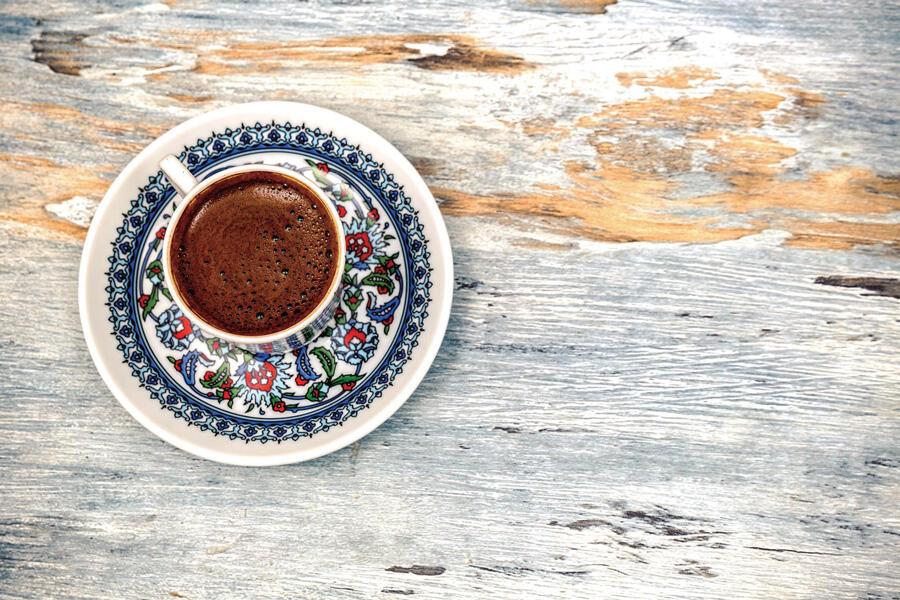
Turkish Coffee, origins and method of preparation
In this article. I will talk about Turkish coffee. As a bonus, I will tell you about the love story that binds the Turks to “kahve” (coffee)!
Origins of Turkish coffee
Despite the name, we do not have a historical paternity on Turkish coffee. We do play a major role in bringing it to Europe, however! It is so called due to the diffusion of its very particular preparation method, which took place through the Ottoman world.
Coffee made its appearance in Turkey during the reign of Süleyman (1520-1566), thanks to Pacha Özdemir, who, returning from Ethiopia and passing through Yemen, brought the first coffee beans.
Since then, preparing coffee requires a real procedure, precise steps and well-defined doses; the proper tool for its preparation is the “cezve”, see photo.
Preparation of Turkish coffee
The preparation of Turkish coffee varies according to the amount of sugar used:
“Sade” (without sugar), “orta şeker” (slightly sweetened), “şekerli” (sweetened), “çok şekerli” (very sweet).
Water is poured into the cezve, the equivalent of one cup per person. Then, coffee is added, considering 2 teaspoons per person, and finally the sugar depending on the desired quantity.
The cezve must then be put on the fire but without bringing the coffee to a boil, because the coffee must not ever boil. It should be removed from the heat as soon as a ring of small foam is created; now pour this foam into the bottom of the cup and put the cezve back on the heat for a few more seconds before pouring the coffee into the cup.
To prepare a cup of coffee, therefore, the doses to be used are 2 teaspoons of coffee, a cup of water and any amount of sugar that you wish … the calculation to be made according to the number of guests is up to you.
Kahve
Read and interpret the bottom of the cup
After having tasted our fragrant Turkish coffee, tradition has it that the cup is turned upside down on its saucer.
The cup is expected to cool down and…. It is always hoped that there is a “falçı” in the group. That is a person who is able to read and interpret the shapes created with the coffee base.
This art of divination is called “fal”.
It often happened that even before making coffee, it was investigated whether anyone in the group knows how to do it. Perhaps knowing this earlier allowed the preparer to concentrate more on making excellent coffee.
During my youth, I enjoyed interpreting the drawings and symbols left by the coffee in the cup. I must confess that I did it quite well, but it is clear that there is no scientific basis, only a degree of healthy superstition. It is a centuries-old tradition that we Turks love to pass on, while always hinting a smile of disbelief when our prosperous future is read to us.
Not to be forgotten
On your next trip to Turkey, don’t forget to buy the famous cezve, a nice set of local porcelain coffee cups and one or more packs of authentic Turkish ground coffee.




